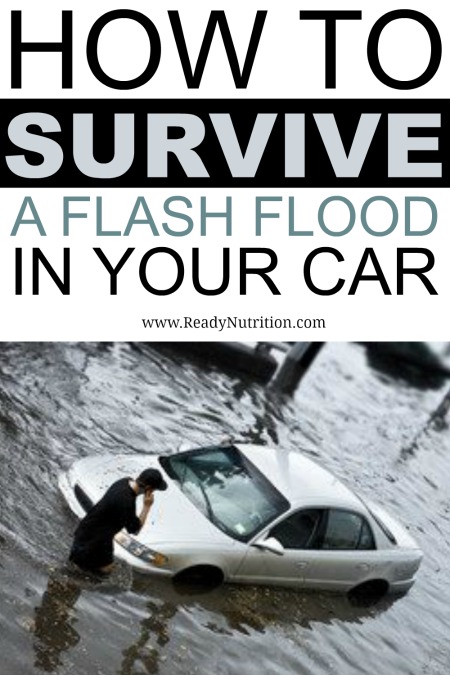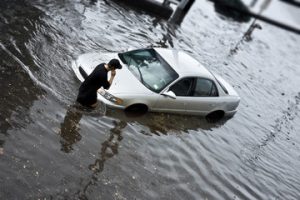Since flood season is upon us, and it’s “unprecedented” this year, it could be helpful to learn how to gain some knowledge and learn to survive [1] a flash flood. If you get caught in your car in a flash flood, knowing the proper steps to take could save your life and the lives of anyone else stuck in the vehicle.
Flooding is one of the most common natural disasters in the United States. Already this year, record-breaking floods have devastated farmlands across the country destroying crops and land. Some of the floods have even swept vehicles away with people trapped inside [2]. Sometimes it’s easy to see the water raging, but other times it looks calm enough to drive right through. But either way, you should be prepared and know what you should do in order to save your own life if you get caught in a flash flood.
The first thing you will want to note is the difference between a flood “watch” and “warning”:
- A flood watch means a flood is possible in your area.
- A flood warning means flooding is already occurring or will occur soon—and you should be prepared to evacuate at a moment’s notice.
Jim Douglas, an instructor with Raven Rescue [3], toldTODAY national investigative corresponden [4]t Jeff Rossen that “not even a foot” of water is enough to make a car float. And SUVs and 4x4s are not immune: “Those big tires will make a truck float even easier,” Douglas said. “They are like big buoys. They’ll float even faster.”
The easiest to follow a piece of advice is simple and preventative [1] in nature. Try to avoid anywhere that is flooded. Even if the water appears calm at the time, it can change in an instant! If things do change quickly, you are not only endangering yourself, but you are putting those who come to rescue you and the others in your vehicle in danger as well.
Another reason to avoid flood waters is that often, the water is contaminated. In the aftermath of Hurrican Harvey, the flood waters actually help flesh-eating bacteria that infected [5] some who had waded through the waters. But it isn’t just dangerous bacteria lingering in the waters. Gasoline, oil, or raw sewage may also be contaminating the flood waters. Additionally, water may also be electrically charged from underground or downed power lines and that could be deadly!
*NOTE: Even the mud left from floodwater can contain sewage and chemicals and possibly dangerous infectious bacteria. The mud should be avoided as well if at all possible.
If you do get caught in a flash flood, and you can get out of your vehicle before it is swept away, immediately move to higher ground. Be wary of seeking higher ground in flooded buildings, however. Those buildings could have sustained water damage [6] that will make them incredibly unsafe and you won’t be any better off.
Never go back for your vehicle if you’ve abandoned it, as it could be swept away. Do not walk through moving water and keep children away from water. Six inches of moving water can sweep you off your feet. If you have no choice but to walk in water, walk where the water is not moving – like puddles that are standing still. Use a stick to check the firmness of the ground in front of you.
If you cannot avoid getting swept up in the water and your car begins to float away, these following steps are critical to your survival:
- Roll the window down the second the water rises. It is the only way out of your vehicle. Climb out the window and
- Get on the roof of the vehicle.
- Stay low and hang on. Stay stable: A car can flip in 6 feet of water. “At least being on the roof you’ve got a fighting chance,” Douglas said. [4] “If you are inside and that car flips over, you’ve got no chance.”
Knowing just how dangerous flood waters could be is a start toward staying safe. Avoidance is best and extreme caution should be exercised if venturing out knowingly into a flood. But knowing and understanding what to do in the event that the absolute worst happens and a flash flood sweeps away your car, will at least give you a chance at survival.

